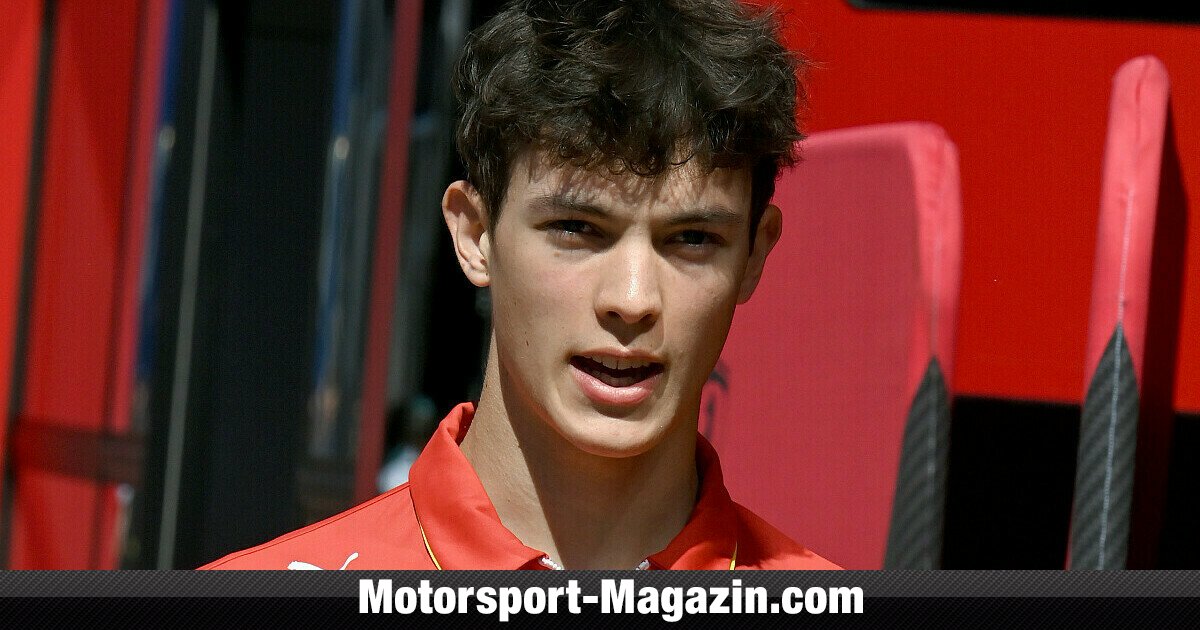Two weeks ago, Ferrari tested a new splash protection system for the FIA at the test track in Fiorano. The aim is still to reduce the spray and at the same time improve visibility for the drivers so that they can drive Formula 1 races even in the rain.
In recent years, the reason for interruptions or cancellations of rain races has not primarily been the danger of wet track conditions, but rather the danger of poor visibility as a result of the wet track. A prominent example of this was the rain farce in Spa 2021.
Bearman: FIA has to readjust the splash protection system again
Arthur Leclerc and Oliver Bearman were the two guinea pigs from the Ferrari squad who were allowed to drive the FIA test. As part of the test, Ferrari’s test track in Fiorano was artificially watered on the straights and Leclerc was sent out with the newly designed, fully or partially closed wheel covers. Bearman was sent onto the track behind to test how much better the visibility is compared to uncovered wheels and whether the person behind can follow on the straight.
At the Formula 1 weekend in Imola, the British Ferrari substitute gave feedback on the tested tire fairings, which are intended to help by reducing the amount of water thrown up in the rain. “There’s not much to say about it so far. The circumstances were pretty similar. So I think we need to go back to the drawing board. We need to look at it further,” Bearman said. He is not yet convinced by the progress in splash protection. The problem of spray continued to exist and so he gave the FIA the task of designing new solutions.

Bearman explained that the current era of F1 cars, which relies heavily on exploiting ground effect, makes it more difficult to mitigate the spray: “I think the problem is that these cars generate so much downforce from the underbody. The Air is supplied with energy from there and of course the spray follows the air flow.”
“We tried a few different configurations. So we did four or five runs to see if you could follow in a straight line. We had different levels of openness [der Reifenverkleidungen; Anm. d. Red.] tried out. Because when they’re completely closed, it’s also quite difficult for the temperature of the tires and the brakes,” Bearman further gave insights into the process of the rain skirt test.
“The visibility was still bad. It was a little better, certainly, the work made a difference. But the problem hasn’t been solved,” said the Formula 2 driver.
The day after the splash guard test, another Ferrari test day followed in Fiorano. The Reds used the 200 kilometers available to them as part of a film day to test the major update package on the Ferrari SF-24 before its debut with the home audience in Imola. Here you can see the most beautiful pictures of the new vehicle:
Ferrari tests Formula 1 update at film day in Fiorano
With each F1 test, Bearman gains confidence
Although the spray problem on the wet track remained unsolved for the time being, Bearman was able to benefit from the test day for his own work. “Returning to the F1 car was perfect for me to get used to the speed and improve. I’m happy that I felt very confident in the car from the first lap and I felt that I got into it very well. Every test I feel like I can push the car a little bit more, I feel a little more comfortable with it, it feels a little more like home, and that’s a nice feeling, that I have,” said Bearman confidently – also with a view to the Formula 2 weekend in Emilia-Romagna.
Every test, every lap brings the team and driver one step further. The data collected helps the teams further develop their car. But Bearman also sees the experience in the Ferrari as useful for the simulator work and hopes that the same will happen Haas, for whom he drove the first free practice session in Imola, to be able to give input and recognize differences between the cars.
Why wasn’t Lando Norris able to win at Imola? Christian analyzes the hot spots of the race in the video:
